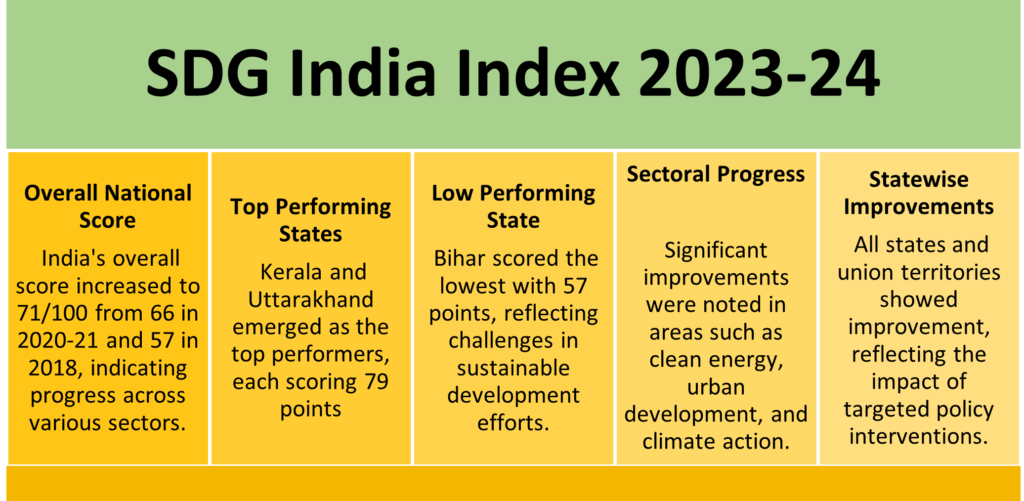(General Studies II – Governance Section – Issues Relating to Development and Management of Social Sector/Services relating to Health, Education, Human Resources. Issues relating to Poverty and Hunger.)
- India’s Sustainable Development Goals (SDGs) journey faces key challenges in human development, notably in areas such as gender disparity, income inequality, and lagging social indicators like education and health. These are critical to achieving sustainable development by 2030.

Issues hindering Progress in Human development Sector –
- Human Development Index (HDI): India ranks 134 out of 193 countries, with an HDI of 0.644 in 2022. Despite some improvement since 1990, India’s HDI has lagged behind neighbours like China and Bangladesh. The COVID-19 pandemic negatively impacted education and income levels, contributing to stagnation in human development from 2015-2022.
- Gender Development Gaps: India has one of the largest gender gaps in the Labour Force Participation Rate (LFPR), with a 47.8-point difference between men and women. The female LFPR remains very low compared to countries like China (53.6%) and Bangladesh (39.2%).
- Income Inequality: India’s income inequality is alarming, with the richest 1% holding 21.7% of the total income. This is much higher than Bangladesh (11.6%) and the world average of 17.5%.
Interventions Needed –
- Improving Gender Equality: Experts recommend policy interventions that focus on increasing female workforce participation, particularly in urban areas. This can be achieved through improved access to education, financial incentives, and flexible work opportunities.
- Reducing Income Inequality: To curb income disparity, targeted policies like progressive taxation, wealth redistribution, and social safety nets should be strengthened. Experts also emphasize the importance of upskilling and employment generation in marginalized communities to bridge income gaps.
- Focus on Education and Health: Investing in quality education and healthcare is vital for long-term human development. Expanding social welfare schemes and ensuring access to affordable healthcare can accelerate progress in SDGs like SDG-3 (Good Health) and SDG-4 (Quality Education).
Addressing gender gaps and income inequality is key to improving India’s human development. With concerted efforts, policy reforms, and effective implementation of SDG-focused strategies, India can make significant strides towards inclusive and sustainable development by 2030.
| Government Initiatives Pradhan Mantri Awas Yojana: Over 4 crore houses constructed to provide affordable housing. Swachh Bharat Mission: Construction of over 11 crore toilets to enhance sanitation facilities. Jal Jeevan Mission: Providing tap water connections to approximately 14.9 crore households. Ayushman Bharat-PMJAY: Offering health insurance coverage to over 30 crore beneficiaries. Skill India Mission: Training more than 1.4 crore youth, enhancing employability and skills development. |

